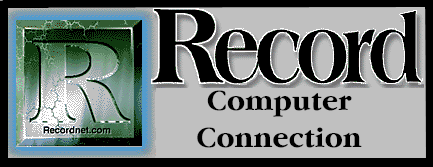

The hard disk on our very first DOS-based PC, back in 1981, was a whopping 10 Megabytes (MB) in size. This was actually considered adequate, if not large at that time. Though this was only 14 years ago, by my timeline, it was 14 light-years ago in the personal computer industry.
I first upgraded to a system with a huge 40MB hard disk and couldn't imagine ever needing more storage space. Three years ago I purchased a system with a 170MB hard disk that I believed I'd never outgrow. Last year, I upgraded to a 1GB hard disk, (1 billion bytes, or a gigabyte) and it is three-quarters full already! The 1GB disk is not even considered huge or extraordinary anymore.
Why this voracious appetite for such tremendous storage space? In a word: graphics. We have evolved, over the last 14 years, from character, or text, based computing to graphics based. Today's programs and operating systems are devouring available hard disk space, especially on older systems. (Remember...in this industry two years is old!)
Your hard disk is actually a group of disks, or platters that are coated with a thin, magnetic film and then connected to a central spindle. Each platter has its own read-write head which floats over the rapidly spinning platter to deposit and retrieve information. The whole set-up looks similar to a phonograph player. It is enclosed in a permanently sealed container, called a disk drive, and mounted inside your PC system.
Hard disk storage capacities vary from system to system, but they are all similarly measured in bytes, kilobytes and megabytes. In text, or character-based computing, 1 character is one byte. The letter "A", or the number "9", for example, each consume 1 byte of space. A 40MB hard disk can hold approximately 20,000 pages of text.
Graphics, or pictures, on the other hand, consume many more bytes when produced. Graphics are generated using pixels, short for picture elements. Imagine your screen as a grid, with rows and columns of tiny squares, cells or dots. Each of these tiny cells is a pixel that is then filled-in to create a graphic image. When graphics files are saved each used pixel consumes bytes and disk space. A single application with lots of graphics can gobble up most of a 40MB hard disk just during installation.
Graphics are displayed in varying degress of accuracy and quality, called resolution. The higher the graphics resolution, the better the picture looks. Resolution is determined by the number of pixels within a picture image. The more pixels, the higher the resolution and...larger file sizes!
You can easily determine your hard disk size and available disk space from either Windows, or the DOS prompt. In Windows, open your File Manager and look in the left-hand corner. You will see a message similar to this: C:\12,424KB free 170,254KB total. This translates to: 170MB hard disk with 12MB of free disk space. 12 MB of free disk space is plenty if you are merely saving data files, but if you're planning to install any graphics-based programs, it is skimpy, and may not even be enough. From the DOS prompt, type CHKDSK, for a similar report.
If you find yourself running out of hard disk space, and you have a worthy system overall, consider upgrading your hard disk. Hard disks, regardless of manufacturer come in two flavors: IDE (Integrated Device Electronics) and SCSI (Small Computer System Interface). Though both these standards have technical merit, IDE is generally more common, easier to install and cheaper. Prices for 800MB to 1GB disks range from $300 to $1000.
Unless you are pretty seasoned in hardware components, I'd recommend having a computer technician install your new hard disk drive. It can be a simple task, if all the components are compatible, but you may need a new controller card or have to fiddle with jumper settings, and this really requires a pro.
If you plan on tackling this job yourself, be sure you do a complete back up of your existing hard disk and make a bootable floppy disk. Also, copy the DOS files FDISK.COM and FORMAT.COM to the floppy disk, as you'll probably need these files to install your new disk drive.
It is impossible to keep pace with this industry. If you can just stay in sight of the dust cloud
ahead...you're doing great!
Feedback? E-Mail cschuler@ceeprompt.com